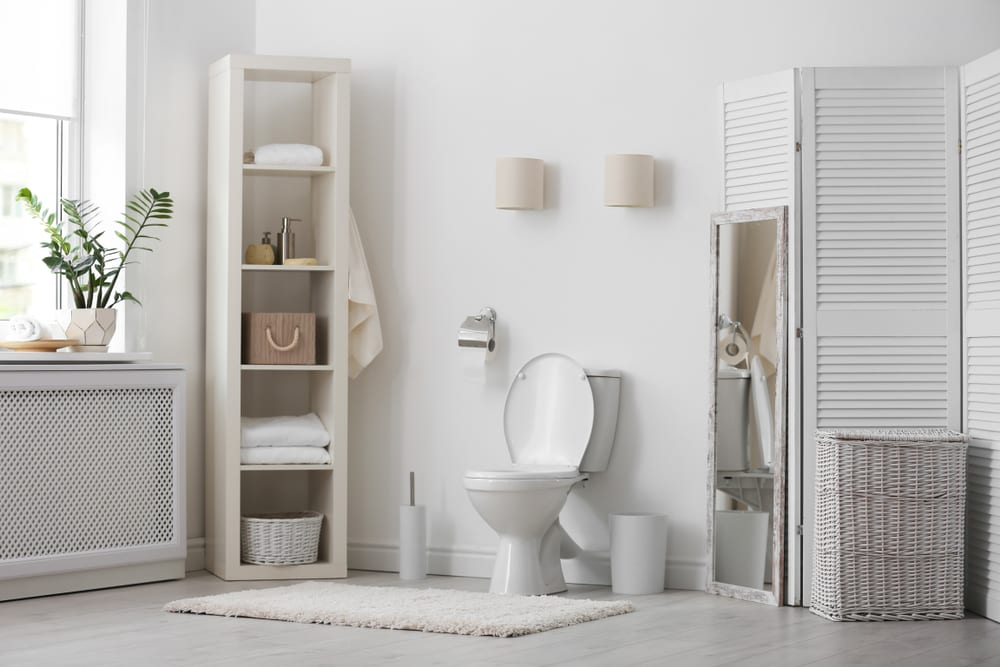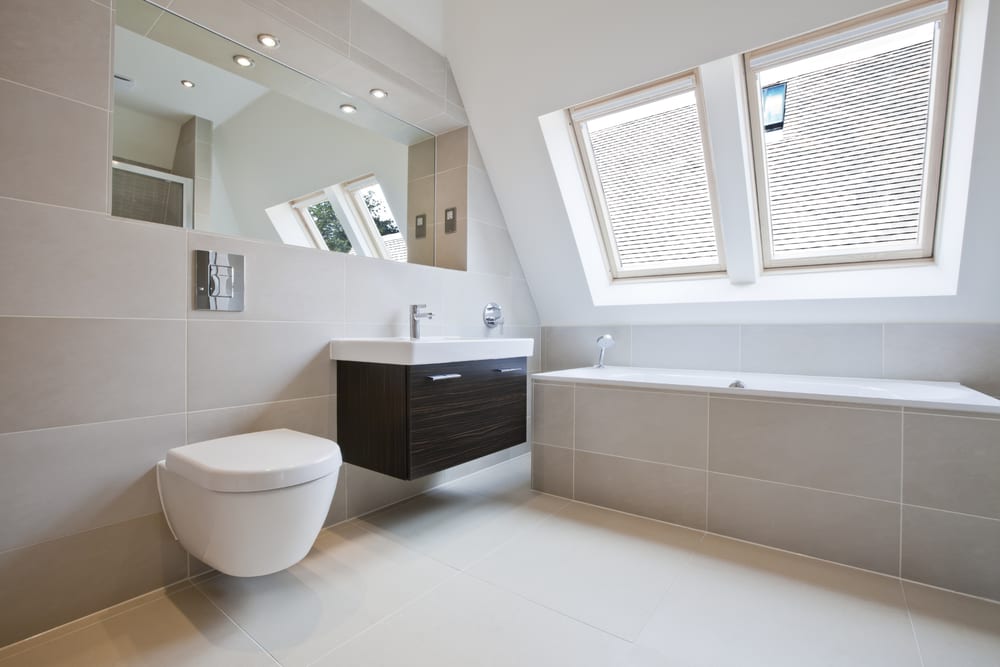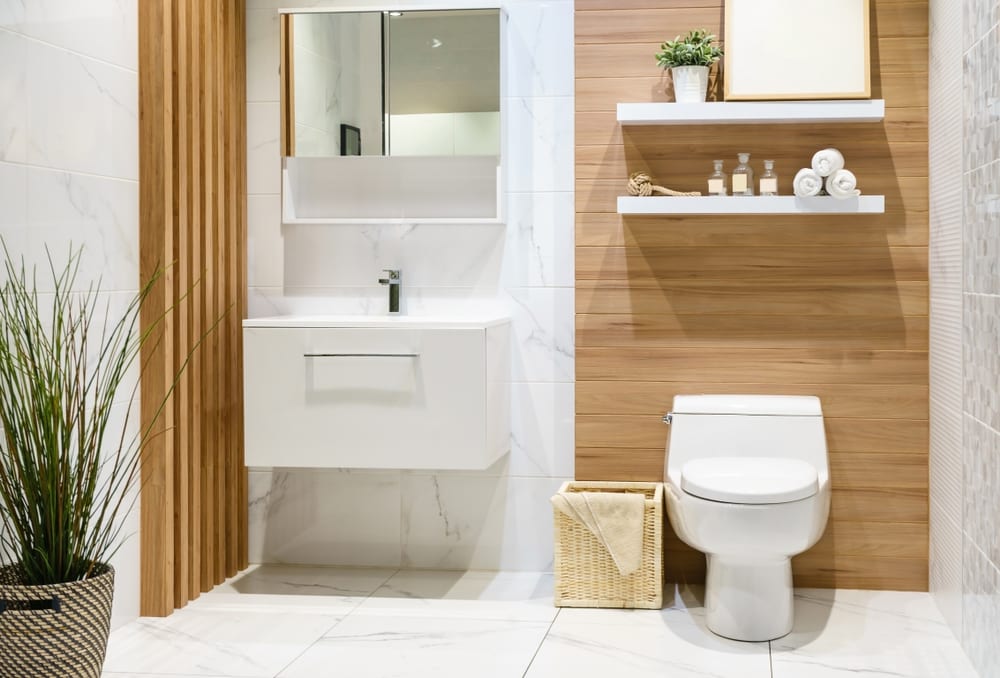
Have you ever wondered about the different types of toilets or how they work? Choosing a new toilet for your bathroom may seem like a mundane task, but finding the right one is important. In fact, you might even be surprised by all the innovative changes in toilets if you haven’t replaced one in a while.
Toilet Sizes & Colors
New types of bathroom toilets have a more modern appearance and come in numerous styles, so it’s easy to accommodate any size space. Whatever design you prefer for your bathroom, you’ll find a variety of sizes, colors, seat heights, and energy-efficient features to choose from.
Different Types of Toilets: Benefits & Drawbacks
One-Piece Toilets
One-piece toilets have a tank and a bowl connected as one piece. This type of toilet is smaller when compared to two-piece designs, so they take up less floor space making them great for small bathrooms. The one-piece toilet configuration is also easier to clean and install than two-piece toilets.
Two-Piece Toilets
Two-piece toilets have been around awhile, so most homeowners are familiar with them. So, how does a two-piece toilet work in a home? The design has a water tank that fits into the bowl. Many homeowners opt for this type of toilet because the look is more traditional. In addition, a two-piece toilet is usually less expensive when compared to other designs.
 Wall-Mounted Toilets
Wall-Mounted Toilets
Wall-mounted toilets are often used in commercial bathrooms, but many homeowners like the modern appearance. If your bathroom space is limited, a wall-mounted toilet can be hung from any wall in the room (as long as there is a water source). A wall-mounted toilet will require a different layout for the drain and water supply.
Smart Toilets
Many home appliances, including toilets, now come equipped with smart technology that adds convenience and luxury to your bathroom. This type of toilet comes with hands-free flushing, self-cleaning wands, dual-flush options, heated seats, and bidets.
Understanding How Your Toilet Works
Bathroom toilets are not complicated machines, but they do have certain operational features that make them more reliable and efficient. The last thing you need is a toilet that doesn’t flush properly.
Gravity-Feed Toilets
Gravity-feed toilets have been around since the 1800s and are still the most common types of toilets on the market today. This type of toilet works by pushing the water down to the drain line to empty the bowl each time you flush. After each flush, freshwater begins filling the tank again. As the water gets higher in the tank, a ball or float rises to stop the water when it gets to a certain level, so the tank doesn’t overflow.
Older gravity-feed toilets utilized up to seven gallons of water with each flush to work properly. Due to federal energy-efficient regulations, newer gravity-feed toilets must use no more than 1.6 gallons per flush to conserve water.
 Pressure-Assisted Toilets
Pressure-Assisted Toilets
Pressure-assisted toilets, the second most common operation, make a loud whoosh when you flush, because pressurized air forces water out of the bowl and into the drain line. Before you purchase this type of toilet, make sure your home has at least 25 pounds of water pressure per square inch (PSI). This metric indicates water pressure from the main water supply into your home. If you’re not sure what your PSI reading is, have your plumber check it out before you buy this type of toilet.
Vacuum-Assisted Toilets
Vacuum-assisted toilets use less than the regulated maximum of 1.6 gallons per flush. How does a vacuum-assisted toilet work? They have a separate vacuum tank inside the porcelain outer tank. When you flush, a suction is created that pushes waste water through the drain line.
Dual-Flush Toilets
If you have to flush your toilet more than once to empty the bowl, a dual-flush toilet can help. Most dual-flush toilets are actually pressure-assisted toilets, but they have a lever or button that allows you to do a partial flush first for extra flushing power. Older types of toilets can be retrofitted with a dual-flush kit by a professional plumber.
Emergency Plumbing Services Near You
If you are not sure how a toilet works and need help solving an issue, contact a licensed plumber on our team. Fenwick Home Services has been serving the Northeast Florida area for 50 years with our unparalleled signature Golden Plunger Service. We have the skill and experience to tackle any plumbing issue you may have. We offer various types of plumbing services, including water heater repair, sewer line replacement, water line installation, and water softener repair. Give our team a call by phone at 904-217-5694 or schedule an appointment on our website to receive assistance with a plumbing issue.

